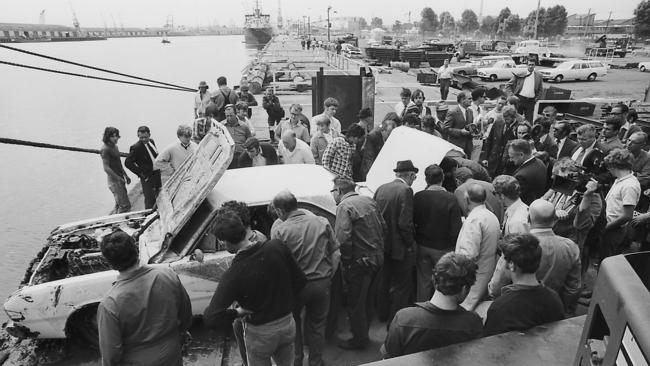Man’s mystery identity could be solved decades after horror river find, police say
A man’s identity remains a mystery five decades after children discovered his body washed up in a river on Christmas Day. But these clues could lead to a major breakthrough.

News
Don't miss out on the headlines from News. Followed categories will be added to My News.
A distinctive ring worn by a man whose body was once thought to belong to a murdered unionist after it washed up in a river more than five decades ago could help solve his mystery identity, detectives say.
Children discovered the man’s decomposed body in the Steavenson River in Buxton, almost 100km northeast of Melbourne, about 4.30pm on Christmas Day in 1971 as they were playing in the water.
The man, who was believed to be aged in his 40s or 50s, was 183cm tall with dark, greying hair and a large build.
He wore a black signet ring on his left ring finger inscribed with the characters “21.4.71 P.U.C.K”.
One avenue of inquiry being explored by detectives is whether the man, who was described as a “continental migrant”, was Ukrainian, with the inscription on the ring possibly being “Ð .И.С.К”, a Cyrillic term that means “risk” in English.
There was also a Ukrainian youth camp about 4km upstream from where the children found the man’s body.
Along with the blue jeans, a white shirt, a vest with square white buttons and desert-style boots he was wearing when he was found about 60m downstream from the Maroondah Hwy Bridge, he was also wearing a belt around his waist and a thick band around his stomach to support his stomach muscles.
At one stage, investigators believed the body could have belonged to Alfred “The Ferret” Nelson – a notorious Painters and Dockers unionist who vanished after a bitter dispute between the union’s warring factions that same year.


Detectives have long believed Mr Nelson was murdered after his car was pulled from the Yarra River, whose body has never been found.
But the physical features of the man pulled from the Steavenson River did not match Mr Nelson’s.
An autopsy showed that the man had heart disease and cirrhosis of the liver.
Dental analysis uncovered that he underwent molar repairs, but his dental records failed to yield any leads.
The man’s body was so badly decomposed that it was impossible to determine if he was injured in the lead-up to his death, but a 1972 coronial inquest found that he had died by drowning.
His remains have since been buried in an unmarked grave at Springvale Cemetery.
Alexandra Crime Investigation Unit Detective Sergeant Flyn Loughlin said the man could still be identified despite the horror discovery taking place 53 years ago.
“This may have occurred back in 1971 but this man was someone’s son, he had a family, and there were those who loved him,” he said.
“Even the slightest bit of information could be the missing link we need to finally be able to provide some closure in this matter.
“We are confident that there is someone out there who knows something that can help determine who this man was.”
Anyone with information should call Crime Stoppers on 1800 333 000 or submit a confidential report online at www.crimestoppersvic.com.au.
More Coverage
Originally published as Man’s mystery identity could be solved decades after horror river find, police say




